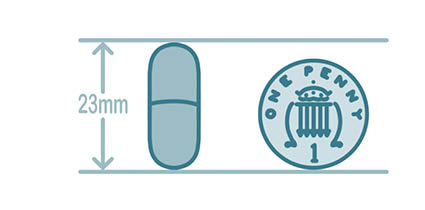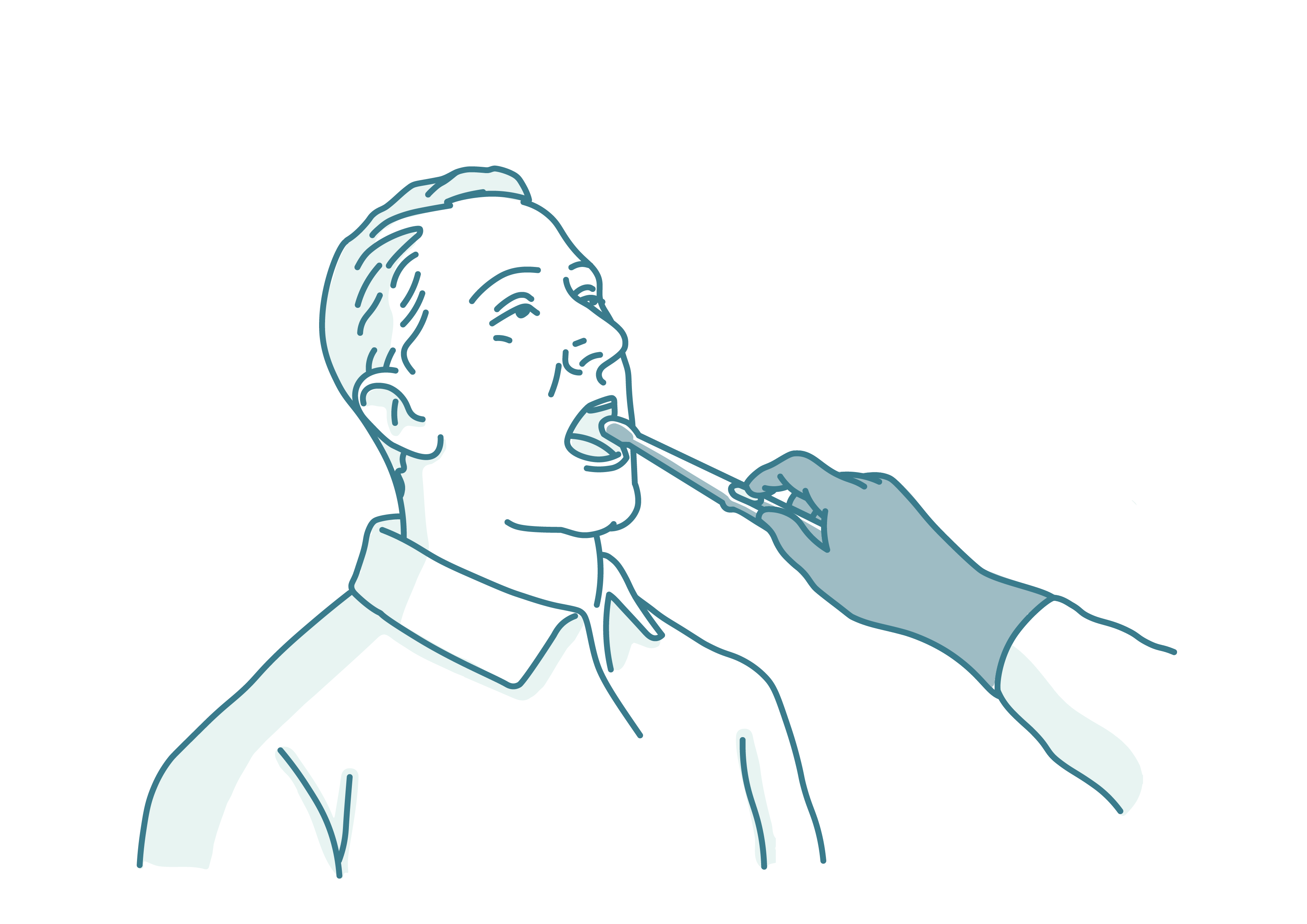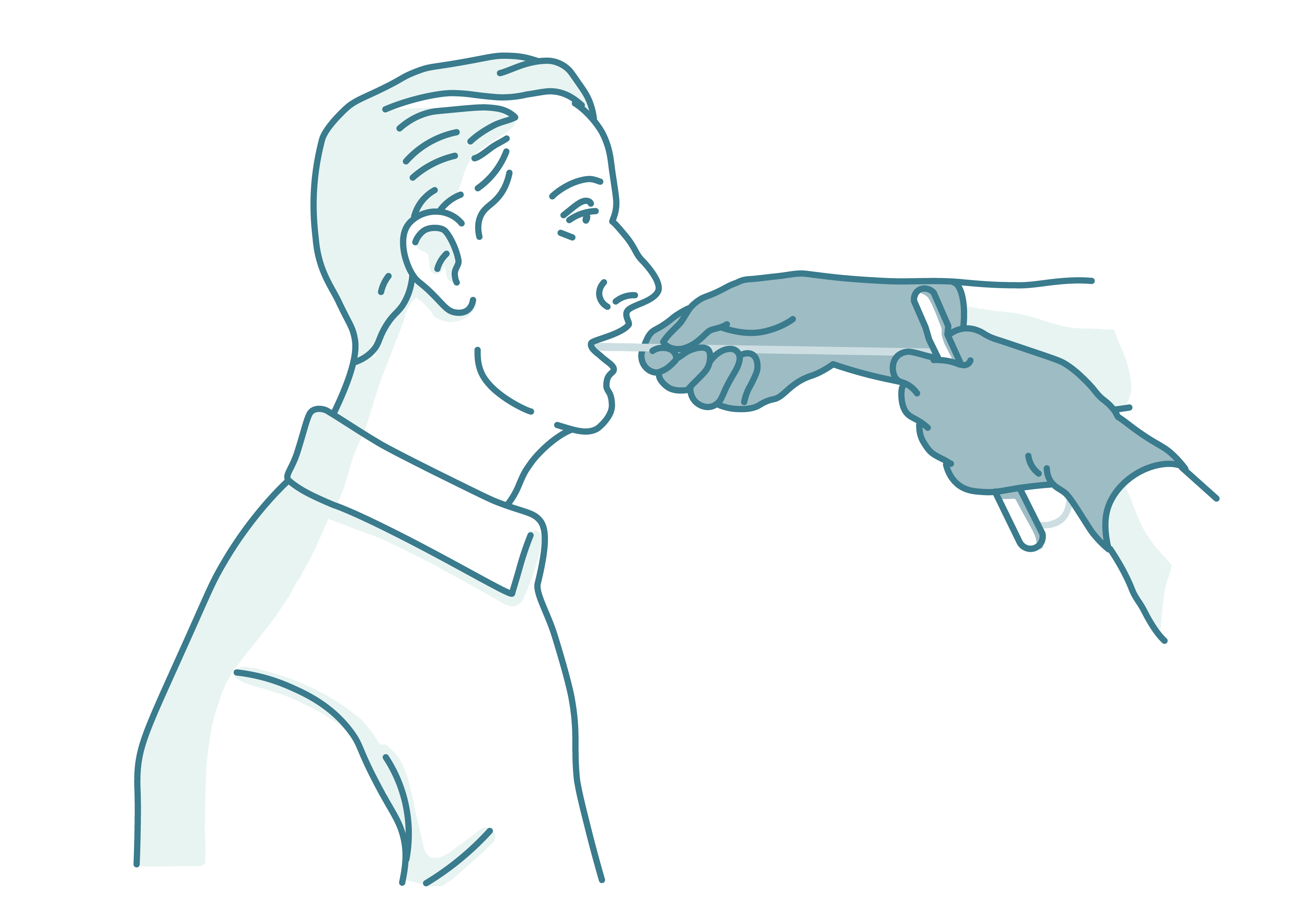Capsule Sponge Test
Information for patients with persistent acid reflux, heartburn, or known Barrett's Oesophagus
This leaflet provides you with information about the capsule sponge test (CST).
It explains:
What a capsule sponge test is.
Why you have been offered CST instead of an upper endoscopy.
What the purpose of this test is.
What the benefits are to having a CST instead of an upper endoscopy.
What happens next:
Pre-assessment appointment
The day of your test
At the hospital
What happens during your test.
What happens after your appointment.
How will you get your results.
Any possible side effects.
What the consent form is.
Who to contact with any questions or concerns.
What is CST?

A capsule sponge test (CST) is a small capsule on a string. The capsule is a similar size to a vitamin tablet, and is made from vegan gelatine.
The capsule contains a small sponge, which is designed to collect a sample of cells from your oesophagus (food pipe). This will then be tested, to find out if there are any cells which are unexpected or abnormal.
Why have I been offered CST instead of an upper endoscopy?
You have been given this leaflet as you have been selected to have a CST, as you have been identified as having acid reflux, heartburn, or Barrett’s Oesophagus. This test can help provide a diagnosis without having a more intrusive test, such as an upper endoscopy (inserting a long, flexible tube called an endoscope, down the throat and into the oesophagus or food pipe).
It is your decision whether to have this test, or whether you want to go straight to upper endoscopy.
What is the purpose of this test?
Many people have heartburn and acid reflux. These can usually be treated with medication and lifestyle changes, for example avoiding eating heavy meals late at night or foods which may increase heartburn (such as fizzy drinks, acidic and spicy foods).
However, some people who have regular heartburn develop a condition called Barrett’s Oesophagus. This is when cells in the food pipe (oesophagus) change shape. About three to six people in every 100 with regular heartburn develop Barrett’s Oesophagus.
People with Barrett’s Oesophagus have a slightly higher chance of developing oesophageal cancer. And we know that if cancer is found early outcomes are improved.
If you need more information on Barrett’s Oesophagus, please speak to your nurse. Or download a copy of the Barrett's Oesophagus leaflet from our web site.
What are the benefits to having a CST instead of an upper endoscopy?
Like an upper endoscopy, CST is used to diagnose abnormalities in your oesophagus. The results of both tests will show us what treatment you need.
However, CST is a much quicker test than an upper endoscopy, and less invasive. You will not need sedation or throat spray to numb your throat, and the test takes less than 10 minutes to complete.
The test is carried out by a nurse in a clinic room. There is no need to change into a hospital gown.
As you do not need sedation, you can eat and drink as normal once your test is complete. You can also return to work and drive straight after your procedure.
What happens next?
The CST comes in two parts, on separate days.
Pre-assessment appointment
Your pre-assessment appointment will last up to 30 minutes and will take place over the phone. If you have any hearing issues and wish someone else to answer the questions for you, please tell the nurse at the beginning of your appointment that you give permission for someone else to speak on your behalf.
The nurse will be happy to answer any questions or worries you may have about your CST.
Please have a list of all your prescribed medications ready for this appointment.
If you have diabetes, please let the nurse know to make sure that we can arrange the most suitable appointment for you. We can also discuss with you any worries you may have about being nil by mouth for six hours.
Please let the nurse know if you have any existing medical conditions.
The day of your test
You must not eat or drink (including water) for six hours before your appointment time.
Take your medication as normal, but with only a little water.
Please bring a list of your prescribed medications with you to your appointment.
Remember to bring your consent form unsigned, as explained at the end of this leaflet.
We are happy for someone to come to the hospital with you, but they cannot come into the clinic room with you unless there are exceptional circumstances. If you have any concerns about this, please speak to the nurse at your pre-assessment appointment.
At the hospital
Please arrive on time for your appointment.
Please refer to your appointment letter for information on when and where your test will take place.
If your appointment is at the Queen Elizabeth the Queen Mother (QEQM) Hospital, please report to the Endoscopy Unit in the St Peter’s Road hospital entrance.
If your appointment is at William Harvey Hospital (WHH), please report to the Endoscopy Unit in the Pink Zone. The nearest external entrance is the Arundel Unit door.
Your appointment will last approximately 30 minutes.
What happens during my test?
At your appointment, a nurse will go through the test with you, and answer any questions you may have. The nurse will then ask you to sign a consent form agreeing to the test.
-
 The nurse uses an applicator to place the capsule on the back of your tongue. You will be given warm water to drink and asked to swallow the capsule. You may feel the string in your mouth to begin with, but usually that feeling goes away.
The nurse uses an applicator to place the capsule on the back of your tongue. You will be given warm water to drink and asked to swallow the capsule. You may feel the string in your mouth to begin with, but usually that feeling goes away. -
 After swallowing, the capsule will stay in your stomach for seven minutes until it dissolves, releasing a small soft sponge. During this time, you stay in the room with the nurse performing the procedure. Feel free to bring something to do to distract you, such as a book or phone.
After swallowing, the capsule will stay in your stomach for seven minutes until it dissolves, releasing a small soft sponge. During this time, you stay in the room with the nurse performing the procedure. Feel free to bring something to do to distract you, such as a book or phone. -
 The nurse will gently remove the sponge by pulling on the thread. This will only take one or two seconds and should not be painful, but you may feel like the inside of your gullet is being brushed. As it is pulled out, the sponge collects a sample of the cells lining your oesophagus (food pipe). Although this is a quick process, it may cause you to gag.
The nurse will gently remove the sponge by pulling on the thread. This will only take one or two seconds and should not be painful, but you may feel like the inside of your gullet is being brushed. As it is pulled out, the sponge collects a sample of the cells lining your oesophagus (food pipe). Although this is a quick process, it may cause you to gag.
What happens after my appointment?
After your test, you can leave the hospital and carry on with your day as normal - eating, drinking, and going back to work.
You may have a mild sore throat after your test. Drinking any type of fluid frequently or sucking throat lozenges can help.
It is very unlikely you will have any other symptoms. However, if you have any severe pain or bleeding (see Are there possible side effects? for more information) or are concerned, you should contact the clinic using the contact details at the end of this leaflet. Outside normal opening times, please go to the Emergency Department, telling them that you have had a CST.
If your heartburn symptoms become worse, you should continue to take your heartburn medication and contact your GP.
Your cell sample will be sent to a laboratory and tested for signs of Barrett’s Oesophagus, inflammation, or cancerous changes.
How will I get my results?
The results of your test will take around two to three weeks following your procedure. Your GP will be sent a copy of your results.
If your CST test shows your cells are normal
If you have this result you will receive a letter in the post. This means that there is no evidence of damage to your oesophagus (food pipe), and you will continue with your current treatment (such as acid-suppressants) for your symptoms.If the CST tests finds any abnormal cells or is inconclusive
Further investigation of the oesophagus (food pipe) will be needed. This is usually an upper endoscopy. You will receive a phone call from the nurse to discuss the reasons for this. If you would like more information on this investigation, please speak to your nurse.
Are there possible side effects?
Over 10,000 people in the UK have had a capsule sponge test so far, with no serious side effects.
Swallowing the capsule is not painful and most people have no problem doing so. If you do have a problem, we will not continue with the test. As you have not been removed from the upper endoscopy waiting list, we will tell the Endoscopy Unit that you are not suitable for CST and will need an upper endoscopy instead.
You may have a mild sore throat after your test, which can last for up to 48 hours. This is easily treated with fluids and / or lozenges.
There is a small risk (less than one in 5,000) that the string may become detached from the sponge, or it may be difficult to remove the sponge. If this happens, it is not painful or dangerous. You will have an upper endoscopy to remove the sponge (the same procedure you were originally referred for) within four to six hours.
There is a very small possibility that the capsule could go into your lungs instead of your stomach (the same as when you swallow food). To date this has not happened.
If the device should cause any form of damage to the lining of your oesophagus, there is a very small possibility that your oesophagus could become infected and need treatment. To date this has not happened.
Oesophageal spasm is a condition where the oesophagus (food pipe) becomes confused, as it is designed for items to go down not up, so it can go into spasm. If this should happen, we will sit you quietly and treat your symptoms.
Some streaking of red blood when you cough or vomit is possible after your procedure, due to the irritation caused by the device. If this does happen, it should last no more than 24 hours. If the amount of red blood is a lot more or you notice red stools when you go to the toilet, you should contact the clinic using the contact details at the end of this leaflet. Outside normal opening times, please go to the Emergency Department, telling them that you have had a CST.
Like all tests, the CST may not find all abnormalities. On very rare occasions, a serious abnormality might not be found by the test. If you have any questions about this, please discuss it with the nurse at your pre-assessment or procedure appointment.
What is the consent form?
When you come to your appointment, bring the unsigned consent form with you. If you decide to go ahead with the CST, we will ask you to sign a consent form. This confirms that you agree to have the test and that you understand what it involves. You must make sure you have read and understood all the information you have been given.
If you decide you do not want the procedure, you can withdraw your consent for treatment at any time.
Contact details
If you have any questions, or would like more information about your capsule sponge test, please contact the CST Team between 8am and 4pm, Monday to Friday.
Telephone: 01233 633331 extension 723-3096
Mobile: 07971 102485